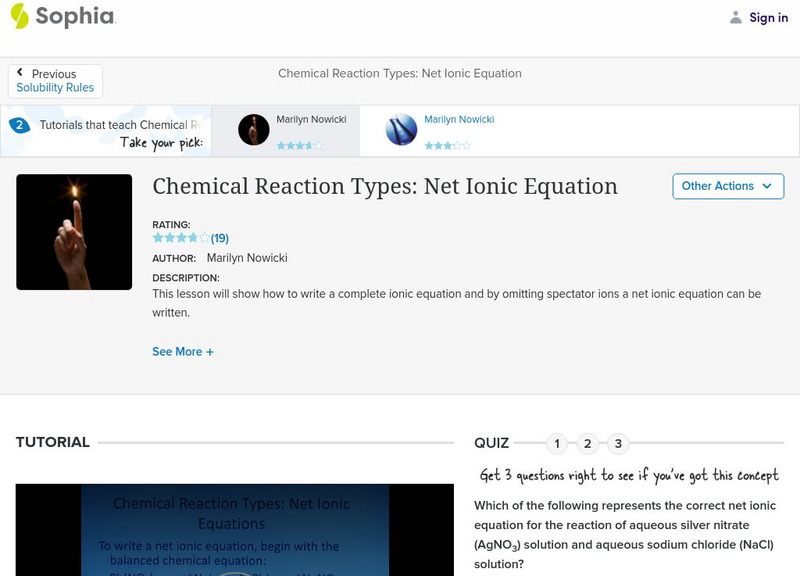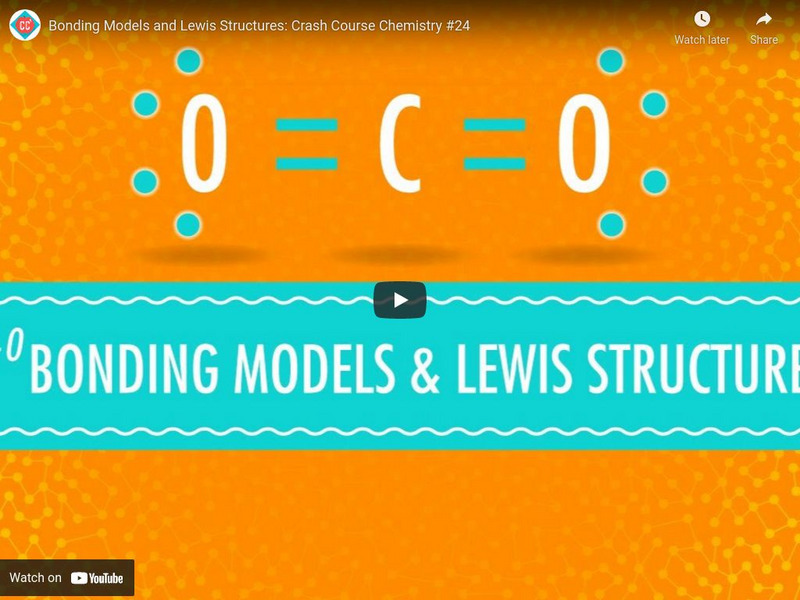Getty Images
Old Market Square & Council House, Nottingham, England, UK, Europe
Old Market Square & Council House, Nottingham, England, UK, Europe
Getty Images
Old Market Square & Council House, Nottingham, England, UK, Europe
Old Market Square & Council House, Nottingham, England, UK, Europe
Khan Academy
Khan Academy: Chemistry of Life: Chemical Bonds and Reactions
Learn how atoms stick together to form a bond in this video. Video explains ionic, covalent, and metallic bonding. [13:21]
Sophia Learning
Sophia: Chemical Reaction Types: Double Displacement (Precipitation): Lesson 2
This lesson will demonstrate how to identify a precipitation reaction and determine whether or not it will occur by using several examples. It is 2 of 2 in the series titled "Chemical Reaction Types: Double Displacement (Precipitation)."
Sophia Learning
Sophia: Chemical Reaction Types: Net Ionic Equation: Lesson 2
This lesson will show how to write a complete ionic equation and by omitting spectator ions a net ionic equation can be written. It is 2 of 2 in the series titled "Chemical Reaction Types: Net Ionic Equation."
Sophia Learning
Sophia: Ionic Compounds: Naming Compounds With Polyatomic Ions: Lesson 2
This lesson will provide naming rules for ionic compounds containing polyatomic ions and give examples. It is 2 of 2 in the series titled "Ionic Compounds: Naming Compounds with Polyatomic Ions in Formula."
Sophia Learning
Sophia: Chemical Reaction Types: Double Displacement (Precipitation): Lesson 1
This lesson will demonstrate how to identify a precipitation reaction and determine whether or not it will occur by using several examples. It is 1 of 2 in the series titled "Chemical Reaction Types: Double Displacement (Precipitation)."
Crash Course
Crash Course Chemistry #24: Bonding Models and Lewis Structures
In this crash course, explore why scientists develop scientific models like Lewis Structures, and how people can learn from them.
Crash Course
Crash Course Biology #1: That's Why Carbon Is a Tramp
And thus begins the most revolutionary biology course in history. Come and learn about covalent, ionic, and hydrogen bonds. What about electron orbitals, the octet rule, and what does it all have to do with a mad man named Gilbert Lewis?...
Sophia Learning
Sophia: Determining Bond Polarity
Use this lesson to help understand how to calculate the difference in electronegativity to determine whether a bond is ionic, polar covalent, or nonpolar covalent. [6:55]
Sophia Learning
Sophia: Ionic Compounds: Defining Binary Compounds: Lesson 2
This lesson will define a binary ionic compound and give examples. It is 2 of 2 in the series titled "Ionic Compounds: Defining Binary Compounds."
Sophia Learning
Sophia: Summary of Types of Chemical Bonds
This lesson will define a chemical bond as an "intramolecular" force, identify the three main types of bonds formed: ionic, covalent and metallic, and provide examples.
Sophia Learning
Sophia: Chemical Reaction Types: Net Ionic Equation: Lesson 1
This lesson will show how to write a complete ionic equation and by omitting spectator ions a net ionic equation can be written. It is 1 of 2 in the series titled "Chemical Reaction Types: Net Ionic Equation."
Sophia Learning
Sophia: Summary of Compound Types
This lesson will identify the three main types of compounds formed (metallic, ionic and covalent/molecular) and provide examples.
Bozeman Science
Bozeman Science: Chemical Bonds Covalent vs Ionic
Mr. Andersen shows you how to determine if a bond is nonpolar covalent, polar covalent, or ionic.













